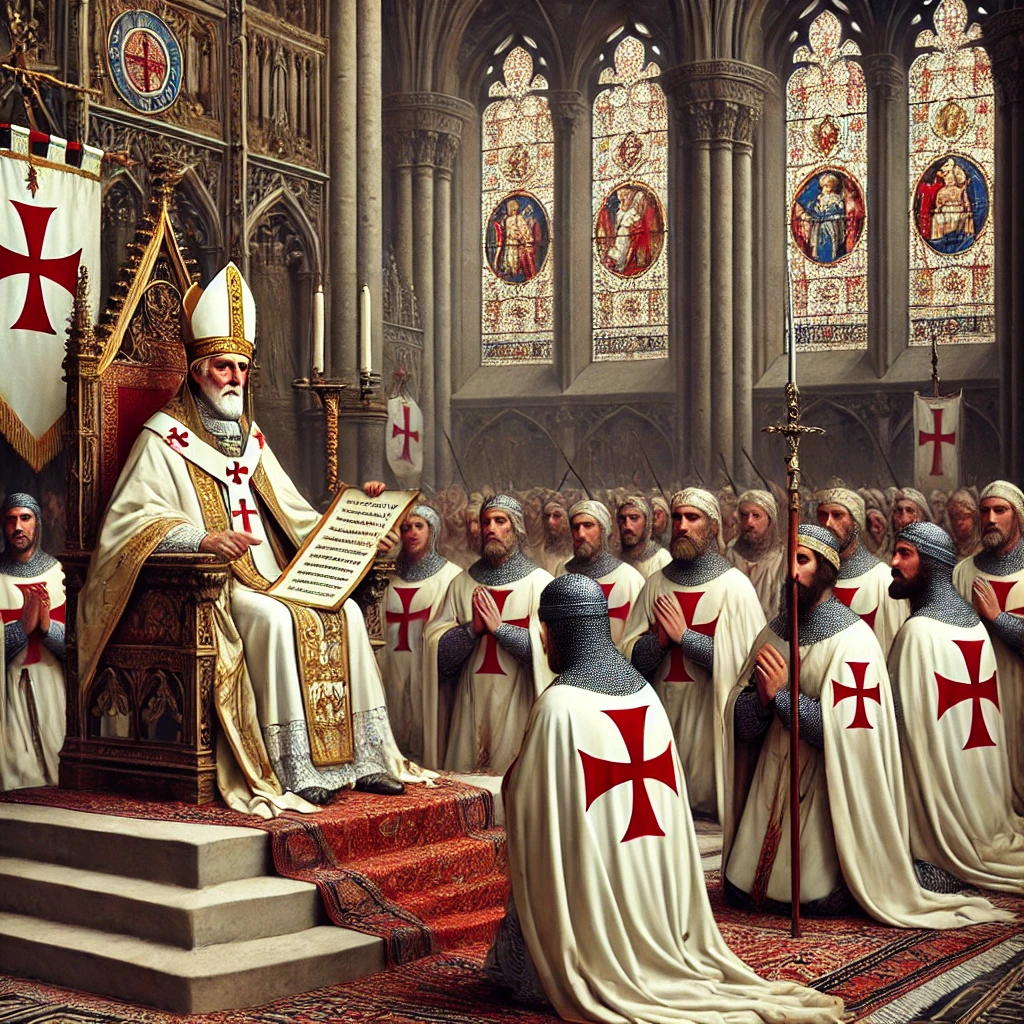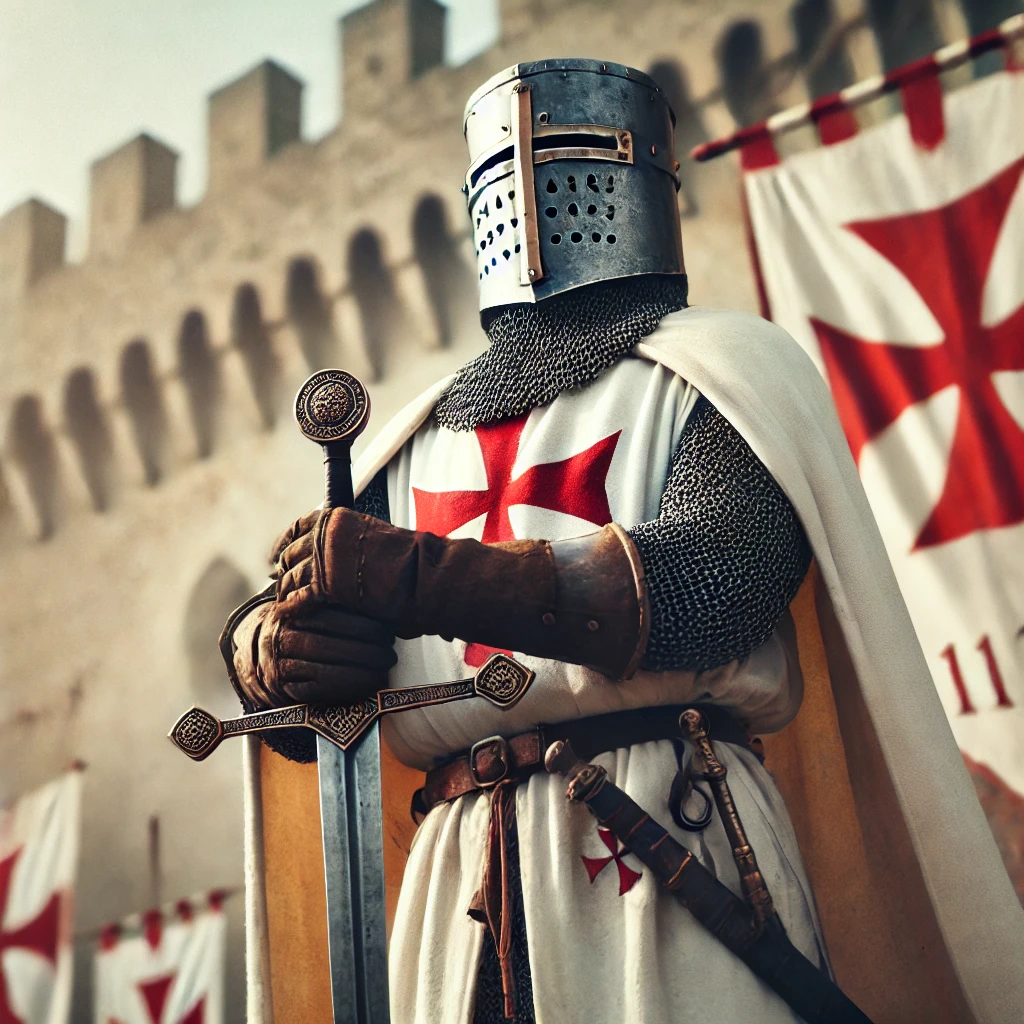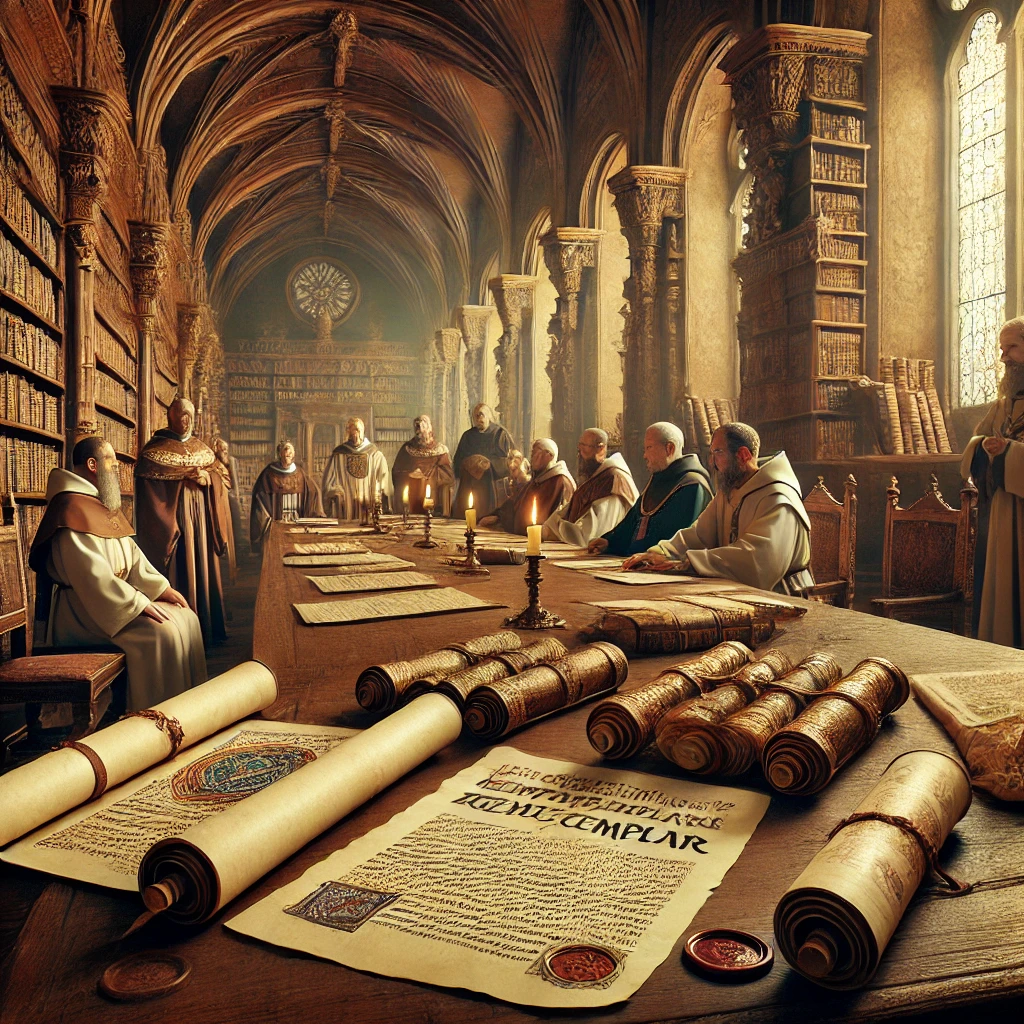On January 13th, 1128, Pope Honorius II granted papal recognition to the Knights Templar, a medieval military order that would come to symbolize both piety and power during the Crusades. This pivotal moment marked the beginning of the order’s meteoric rise to prominence and influence, leaving an indelible mark on history.

The Birth of the Knights Templar
The Knights Templar was founded in 1119 by Hugh de Payens and eight other knights with the mission of protecting Christian pilgrims traveling to the Holy Land. Initially, the order operated with modest resources, relying on donations and support from local nobles. Their mission was noble but largely limited in scope until they received papal recognition. The Council of Troyes, convened in 1128, formalized the order’s mission, rules, and organization under the Church’s auspices. This endorsement by Pope Honorius II transformed the Templars from a small band of knights into an institution with a divine mandate.
Significance in Medieval Europe

Papal recognition brought legitimacy and immense privilege to the Knights Templar. As a papally sanctioned order, the Templars were exempt from local laws and taxes and answered only to the Pope himself. These privileges allowed the order to amass wealth and land across Europe and the Holy Land. Their fortified castles and secure routes became critical for the safety of Christian pilgrims and for supporting Crusader states. Over time, the Templars evolved into a powerful financial institution, offering banking services that prefigured modern systems.
This recognition also fueled their recruitment efforts. Young men from noble families joined the Templars, drawn by the promise of serving both God and a military cause. The order’s unique combination of martial prowess and religious devotion made it a symbol of Christian chivalry during the Crusades.
Lasting Impact and Legacy
The Knights Templar’s influence extended far beyond the medieval period. Although the order was disbanded in the early 14th century under controversial circumstances, their contributions to military strategy, architecture, and finance resonate today. Their fortified castles, such as the iconic Krak des Chevaliers in Syria, remain marvels of medieval engineering. Furthermore, their banking practices laid the groundwork for the modern banking system, including the use of checks and letters of credit.
The Templars’ story has also inspired countless works of fiction and conspiracy theories. From novels like The Da Vinci Code to films and video games, the mystique surrounding the Knights Templar continues to captivate popular imagination. Their role as guardians of religious relics and their dramatic downfall have made them enduring symbols of intrigue and mystery.
A Turning Point in Religious and Military History

The papal recognition of the Knights Templar was more than just an administrative decision; it was a turning point that shaped the medieval world. By legitimizing the Templars, Pope Honorius II ensured that the order would play a crucial role in the Crusades and the protection of Christian interests in the Holy Land. Their rise to power exemplified the intersection of faith, warfare, and politics in medieval Europe.
In today’s world, the Knights Templar serve as a reminder of how institutions can evolve and leave lasting legacies. Their journey from a humble group of knights to a dominant force in medieval society demonstrates the transformative power of recognition and support from influential authorities. The events of January 13th, 1128, remain a testament to the enduring impact of pivotal historical moments.
